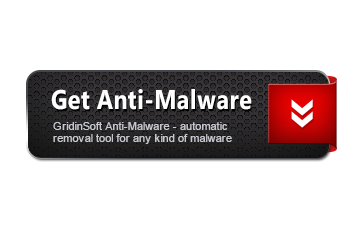The Trojan.Agent.CEFD (B) is considered dangerous by lots of security experts. When this infection is active, you may notice unwanted processes in Task Manager list. In this case, it is adviced to scan your computer with GridinSoft Anti-Malware.

Gridinsoft Anti-Malware
Removing PC viruses manually may take hours and may damage your PC in the process. We recommend using GridinSoft Anti-Malware for virus removal. Allows to complete scan and cure your PC during the trial period.
What Trojan.Agent.CEFD (B) virus can do?
- Executable code extraction
- Injection with CreateRemoteThread in a remote process
- Attempts to connect to a dead IP:Port (2 unique times)
- Creates RWX memory
- Reads data out of its own binary image
- A process created a hidden window
- Drops a binary and executes it
- Performs some HTTP requests
- The binary likely contains encrypted or compressed data.
- Uses Windows utilities for basic functionality
- Queries information on disks for anti-virtualization via Device Information APIs
- Deletes its original binary from disk
- Sniffs keystrokes
- A system process is generating network traffic likely as a result of process injection
- Installs itself for autorun at Windows startup
- Creates a copy of itself
- Creates a slightly modified copy of itself
Related domains:
groupcreatedt.at |
resolver1.opendns.com |
myip.opendns.com |
geroyamslava.at |
How to determine Trojan.Agent.CEFD (B)?
File Info:
crc32: 30A1F90Emd5: bb0f1922f64512b13f8436e83f9c182bname: BB0F1922F64512B13F8436E83F9C182B.mlwsha1: a8d37db06522c25905d8c9b34352a0c93bf53b20sha256: 470662c40cb6ae679c0bbce3746e36540206dd4f859377833632edaede93dc01sha512: ceda9b2117d51f079af87188d43c79d84e59e8f9efd14316e6e9af7164d39d537892bfa50cc3a835c225c73d6ffd898040f3a3744492d396adceebb09e503e3assdeep: 6144:+1mB2HFbbkZGy3qa+qPk7rqfXdPg4esp2Yk2S6npjwidB:+1mBj7+qkrqfqsEMpjddBtype: PE32 executable (GUI) Intel 80386, for MS WindowsVersion Info:
0: [No Data]
Trojan.Agent.CEFD (B) also known as:
| Bkav | W32.AIDetect.malware1 |
| K7AntiVirus | Trojan ( 005137001 ) |
| Elastic | malicious (high confidence) |
| DrWeb | Trojan.PWS.Sphinx.2 |
| Cynet | Malicious (score: 100) |
| CAT-QuickHeal | Ransom.Exxroute.A3 |
| ALYac | Trojan.Agent.CEFD |
| Cylance | Unsafe |
| Zillya | Trojan.Zerber.Win32.4948 |
| Sangfor | Trojan.Win32.Save.a |
| CrowdStrike | win/malicious_confidence_100% (W) |
| Alibaba | Ransom:Win32/Cerber.349699d3 |
| K7GW | Trojan ( 005071111 ) |
| Cybereason | malicious.2f6451 |
| Cyren | W32/S-6971a271!Eldorado |
| Symantec | Packed.Generic.493 |
| ESET-NOD32 | a variant of Win32/Kryptik.FOZP |
| APEX | Malicious |
| Avast | Win32:Filecoder-AY [Trj] |
| ClamAV | Win.Malware.Ursnif-7641287-1 |
| Kaspersky | HEUR:Trojan-Ransom.Win32.Zerber.vho |
| BitDefender | Trojan.Agent.CEFD |
| NANO-Antivirus | Trojan.Win32.Androm.elzyje |
| MicroWorld-eScan | Trojan.Agent.CEFD |
| Tencent | Win32.Trojan.Spora.Pepr |
| Ad-Aware | Trojan.Agent.CEFD |
| Sophos | Mal/Generic-R + Mal/Elenoocka-E |
| Comodo | TrojWare.Win32.Crypt.C@7vajd0 |
| BitDefenderTheta | Gen:NN.ZexaF.34790.umW@a8YGM!b |
| VIPRE | Trojan.Win32.Generic!BT |
| TrendMicro | Ransom_CERBER.SM37 |
| McAfee-GW-Edition | BehavesLike.Win32.Ransomware.fc |
| FireEye | Generic.mg.bb0f1922f64512b1 |
| Emsisoft | Trojan.Agent.CEFD (B) |
| SentinelOne | Static AI – Malicious PE |
| Jiangmin | Backdoor.Androm.nlo |
| Avira | HEUR/AGEN.1116786 |
| Antiy-AVL | Trojan/Generic.ASMalwS.22E4750 |
| Microsoft | Ransom:Win32/Cerber |
| SUPERAntiSpyware | Ransom.Spora/Variant |
| GData | Trojan.Agent.CEFD |
| AhnLab-V3 | Trojan/Win32.Cerber.R195956 |
| Acronis | suspicious |
| McAfee | Ransomware-FMJ!BB0F1922F645 |
| MAX | malware (ai score=100) |
| VBA32 | BScope.TrojanPSW.Sphinx |
| Malwarebytes | Ransom.Spora |
| Panda | Trj/GdSda.A |
| TrendMicro-HouseCall | Ransom_CERBER.SM37 |
| Rising | Ransom.GlobeImposter!1.AF70 (CLASSIC) |
| Yandex | Trojan.GenAsa!9Um0B9oap1E |
| Ikarus | Trojan-Ransom.Cerber |
| MaxSecure | Trojan.Malware.300983.susgen |
| Fortinet | W32/Kryptik.GKVH!tr |
| AVG | Win32:Filecoder-AY [Trj] |
| Paloalto | generic.ml |
| Qihoo-360 | Win32/Ransom.Filecoder.HxQBaIMA |
How to remove Trojan.Agent.CEFD (B)?
- Download and install GridinSoft Anti-Malware.
- Open GridinSoft Anti-Malware and perform a “Standard scan“.
- “Move to quarantine” all items.
- Open “Tools” tab – Press “Reset Browser Settings“.
- Select proper browser and options – Click “Reset”.
- Restart your computer.



Leave a Comment